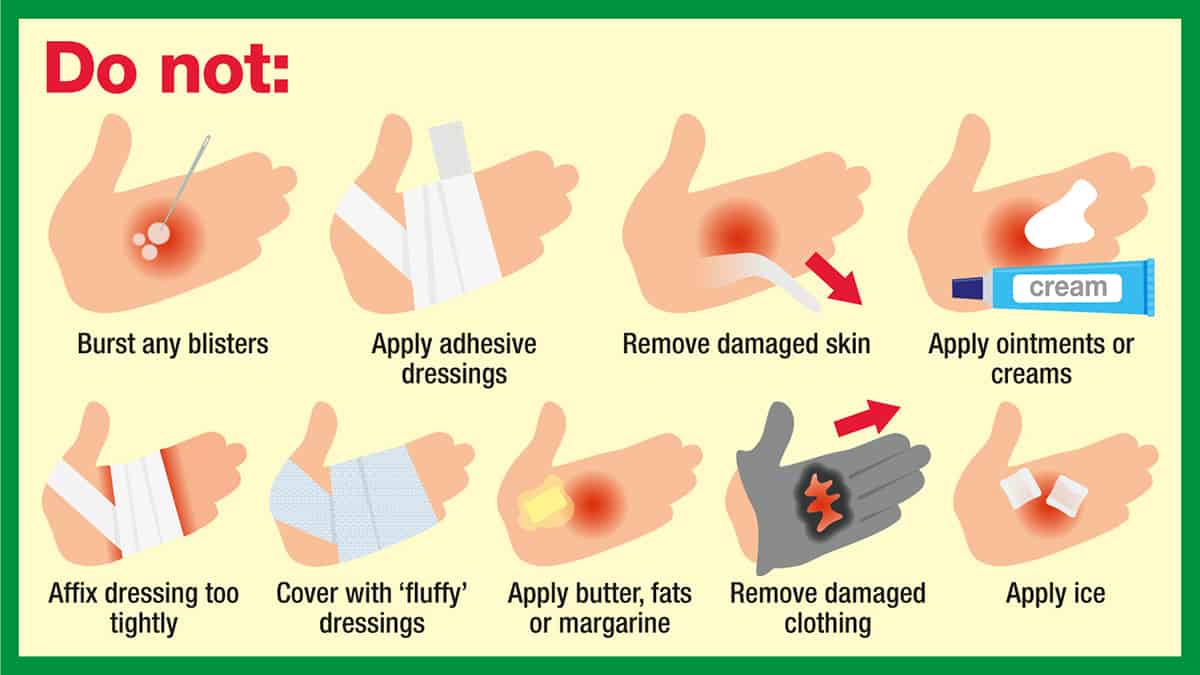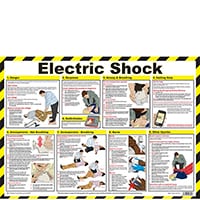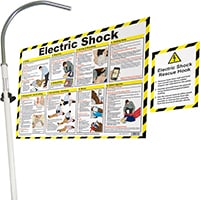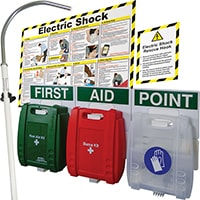
What is an electric shock?
An electric shock can be caused by a voltage as low as 50 volts, which can block electrical signals between the brain and muscles. This can cause the heart to stop beating effectively, breathing problems and muscle spasms, all of which pose a serious threat to a person’s life.
Are electric shocks at work rare?
Each year, around 1000 workplace accidents involving electrical shocks or burns are reported to the HSE, including about 30 fatal accidents. Voltages as low as 50 Volts AC or 120 Volts DC are hazardous. Even non-fatal shocks can cause severe and permanent injury.
What injuries do electric shocks cause?
If, as mentioned above, the heart stops beating effectively or a person experiences breathing problems, this can result in cardiac arrest and even death.
Loss of muscle control can cause very painful muscle spasms that can even be strong enough to break bones. They also can cause more harm as they cause a person to have less control: they might not be able to let go or get away from the source of the electric shock or, if working in a dangerous environment, could be in more danger of harm (such as increased likelihood of falling if working at height).
Electric injuries often also involve burns, depending on the type of electric shock experienced. External burns may be caused where an electrical current makes contact with the skin. If the electrical current flows through a person’s body, these will be seen particularly where the current entered and exited the body. An electrical current flowing through the body can also cause burns as it heats the tissue along the length of the current flow. These burns are often very deep, requiring surgery, and can be permanently disabling.
How can workplaces prepare effectively for electric shocks?
There are several supplies employers can utilise to ensure that effective first aid is given in the event of an electric shock. With electric shocks, providing clear information to responders (in the form of an instructional poster, for example) can help to ensure that no further electrical harm is caused, either to the casualty or the responder:
What to do if someone gets electrocuted
Danger: if someone has suffered an electric shock, it is possible that the environment is still unsafe. Make sure you don’t put yourself in danger, and try to remove the danger from the environment:
- High voltage electricity, such as that flowing through overhead power cables, has the ability to jump or arc up to 18 metres. If the casualty has been injured by a high voltage current, stay at least 25 metres away until the power has been switched off by an official agency, e.g. the Electricity Board.
- Low voltage electricity, such as that coming from a power tool, could still be dangerous to you.
- Insulate yourself from the ground by standing on a non-conductor, such as rubber matting.
- Use a low conductivity object, such as a wooden broom or an electric shock rescue hook to turn the power off at the mains or remove any cables/electrical objects still in contact with the casualty.
Response: once the environment is safe, check the casualty’s responsiveness. Speak to them in both ears, using their name and asking them to open their eyes or respond if they can hear you. You can shake their shoulders to get a response, but you should make sure you do not move the casualty.
Airway and Breathing: if the casualty is unresponsive, check their airways for obstructions and assess their breathing: can you see their chest rising and falling? Can you hear their breathing? Can you feel their breath if you put your cheek near to their face?
- If they are breathing normally, put them into the recovery position and keep checking for continued breathing
CPR: if the casualty is unresponsive and not breathing normally, commence CPR and continue until:
- The casualty shows signs of recovery
- The emergency services arrive
- You become exhausted and unable to continue
- The situation changes and you are now in danger.
Burns: if the casualty is breathing normally and responsive, follow the usual treatments for burns. If the casualty is unresponsive, cool the burns with wet dressings once they are in the recovery position.
Seizures: it is possible for seizures to be present for some time after the exposure to electricity and they could indicate a seriously ill casualty. In the event of a seizure:
- Try to control the fall of the casualty and remove nearby objects on which they might injure themselves
- Place padding under the casualty’s head, e.g. a folded-up jumper
- Do not place anything in the casualty’s mouth
- Loosen clothing that could restrict the airway
- Time the seizure.
After the seizure has subsided, return to checking responsiveness, airways and breathing, and follow the instructions above.
Even if a casualty appears well and has no injuries after an electric shock, it is still advisable to take them to a hospital or medical facility for a check-up. Electric shocks can cause injury to internal organs or systems that may be affected several hours later.
Preventing electric injury in the workplace
As with all risks, an assessment of the environment is fundamental to understanding the level of risk involved. Employers should consult HSE guidance to ensure they are managing electrical risks effectively.
Lower-risk environments:
Even in lower risk environments, electrical safety needs to be taken seriously. With most modern workplaces requiring electrical equipment of some sort – an office computer or even a break-room kettle – electric injury is a possibility that all employers must consider as part of their risk assessment.
Electrical safety when working from home:
Even if employees are working from home, their employer is responsible for ensuring they can carry out their work safely.
Employers should ask workers to visually check for any damage to sockets, plugs or leads used in connection with their work, as well as giving them advice on the hazards of overloaded extension cables.
You are only responsible for electrical equipment you have provided to your workers, but you should make sure it is being used in a safe environment.
High-risk environments:
The HSE identify three environments in which the risk of electric shock is much greater:
- Wet surroundings, where unsuitable equipment can easily become live and can make its surroundings live
- Outdoors, where equipment may not only become wet but may be at greater risk of damage
- Cramped spaces with a lot of earthed metalwork such as inside a tank, where it could be very difficult to avoid a shock if an electrical fault developed. A voltage as low as 50 volts can block electrical signals between the brain and muscles.
Reducing the risk of electric shock:
- Ensure the competency of people working with electrical equipment
- Ensure the safe installation of all electrical equipment
- Provide suitable and safe equipment, taking environmental factors into account
- Reduce the voltage of equipment to the lowest voltage required for the job
- Provide safety devices, such as residual current devices
- Carry out preventative maintenance.
Preventing electric injury in the home
Most people know the appropriate safety measures to take around electrical items in the home to keep things safe. However, it is easy for us to slip into careless habits in the face of busy lives and households. Here are some of the key areas to consider:
- Plug socket extensions and adaptors: check the current rating on the lead and make sure you never overload an extension lead beyond this; never plug an extension lead into another extension lead.
- Electrical appliances, such as dishwashers and washing machines, should not be left on when leaving the property.
- Appliances that have ventilation, such as microwaves, should be left clear with nothing stored on top.
- Mains-powered portable appliances, such as hairdryers or radios, should never be taken into the bathroom.
- When using outdoor electrical equipment, make sure you use a Residual Current Device, never use equipment in wet conditions and always store equipment in a dry, safe place.
- You should regularly perform a visual check on electrical items in your house:
- Make sure cables and leads are in good condition and don’t run under rugs or carpets
- Make sure that plugs and plug sockets are not damaged or overloaded
- Make sure electrical items are switched off when not in use
- Make sure your fuse box, electricity meter or electrical intake do not have combustible materials stored around them.
Make sure you have the necessary first aid kits and equipment to provide effective first aid in your workplace and home.
Read our blog for more information on first aid, or contact us for further advice and information on our products.




